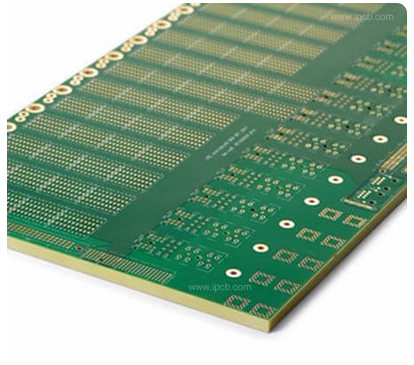In the production process of many varieties and small quantities of military industry, many products also need a lead tin plate. Especially for printed PCB multilayer boards with many varieties and few quantities, if the hot air leveling process method is adopted, it will obviously increase the manufacturing cost, long processing cycle, and very troublesome construction. To this end, usually in the manufacture of the lead tin plate more, but more quality problems arise in processing. One of the biggest quality problems is the quality problem of layer foaming after infrared hot melting of PB tin coating of multilayer printed circuit board.

In addition, because the circuit pattern is easy to produce side erosion in the etching process, the tin-lead alloy plating part is suspended, resulting in a suspension layer. And easy to fall off, resulting in a short circuit between wires bridge. The exposed copper surface can be well protected by infrared hot melt technology. At the same time, the tin-lead alloy coating on the surface and in the hole can be recrystallized after infrared hot melting to make the metal surface shiny. It not only improves the weldability of the connection points but also ensures the reliability of the connection between the components and the inner and outer layers of the circuit. But for the multilayer printed circuit board infrared hot melt, because of the high temperature of the multilayer printed circuit board layer between the layer of the layer bubble phenomenon is very serious, resulting in multilayer printed circuit board yield is very low. What is the cause of the layering foaming quality problem of the multilayer printed circuit board?
Causes:
(1) Improper suppression of air, water, and pollutants into the storage;
(2) Due to insufficient heat in the process of pressing, the cycle is too short, the quality of semi-cured pieces is poor, and the function of the press is incorrect so that the curing degree has problems;
(3) The inner line is badly blackened or the surface is polluted when blackened;
(4) The inner plate or semi-cured sheet is contaminated;
(5) insufficient glue flow;
(6) excessive glue flow -the amount of glue contained in the semi-cured sheet is almost all extruded out of the plate;
(7) in the absence of functional requirements, the inner layer plate as far as possible to reduce the appearance of a large copper surface (because the binding force of resin to the copper surface is much lower than that of resin to resin);
(8) when vacuum pressing is used, the pressure is insufficient, and the glue flow and bonding force are damaged (the residual stress of the multilayer plate pressed by low pressure is also less).
Solutions:
(1) The inner board should be baked to keep dry before stacking.
Strictly control the process before and after pressing to ensure that the process environment and process parameters meet the technical requirements.
(2) Check the Tg of the laminated plate after pressing, or check the temperature record of the pressing process.
The pressed semi-finished products are roasted at 140 degree Celsius for 2-6 hours and then cured.
(3) Strictly control the process parameters of the oxidation tank and cleaning tank of the blackening production line and strengthen the appearance quality of the inspection PCB board.
Try double-sided copper foil.
(4) Cleaning management should be strengthened in the operation area and storage area.
Reduce the frequency of manual handling and continuous plate removal.
In lamination operation, all kinds of loose materials should be covered to prevent pollution.
When the tool pin must be lubricated, the surface treatment should be separated from the laminating area, not in the laminating area.
(5) Appropriately increase the pressure intensity of suppression.
Slow down the heating rate and increase the flow time, or add more kraft paper to moderate the heating curve.
Replace semi-solidified tablets with a higher flow rate or longer gelation time.
Check whether the surface of the steel plate is smooth and without defects.
Check whether the length of the positioning pin is too long, resulting in insufficient heat transfer because the heating plate is not tightly attached.
Check whether the vacuum system of the vacuum multilayer press is in good condition.
(6) Appropriately adjust or reduce the pressure used.
The inner plate should be roasted and dehumidified before pressing because moisture will increase and accelerate the flow of glue.
Use semi-solidified tablets with low flow gel or short gel time.
(7) Try to etch away the useless copper surface.
(8) Gradually increase the pressure intensity used by vacuum pressing appropriately until passing five float welding tests (each at 288 degree Celsius, 10 seconds).